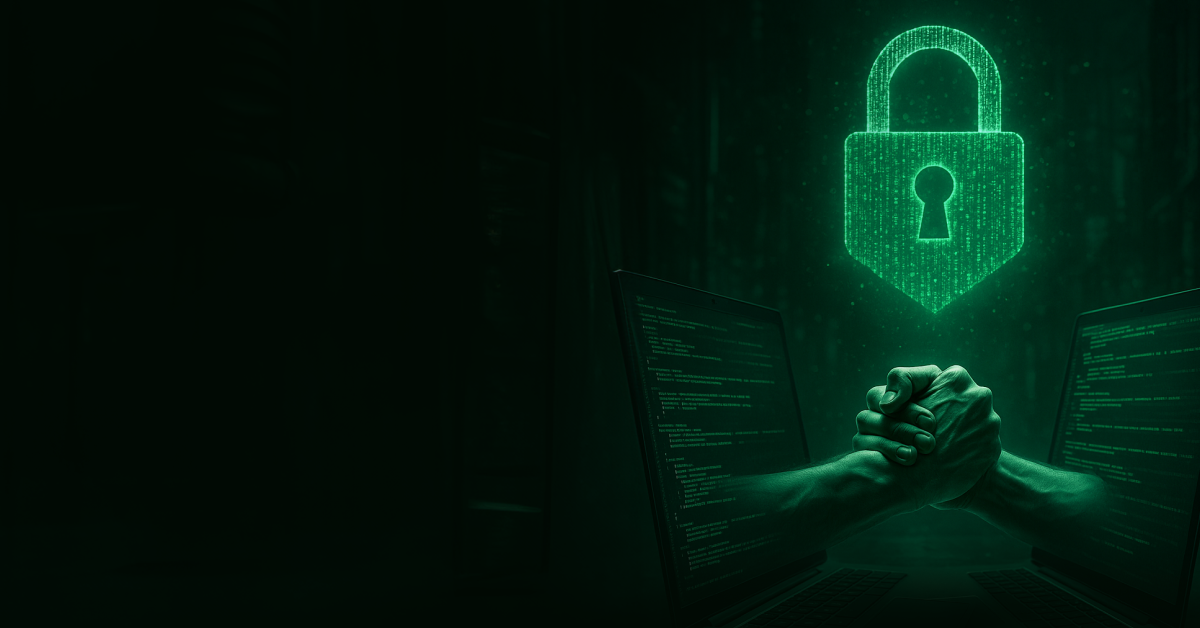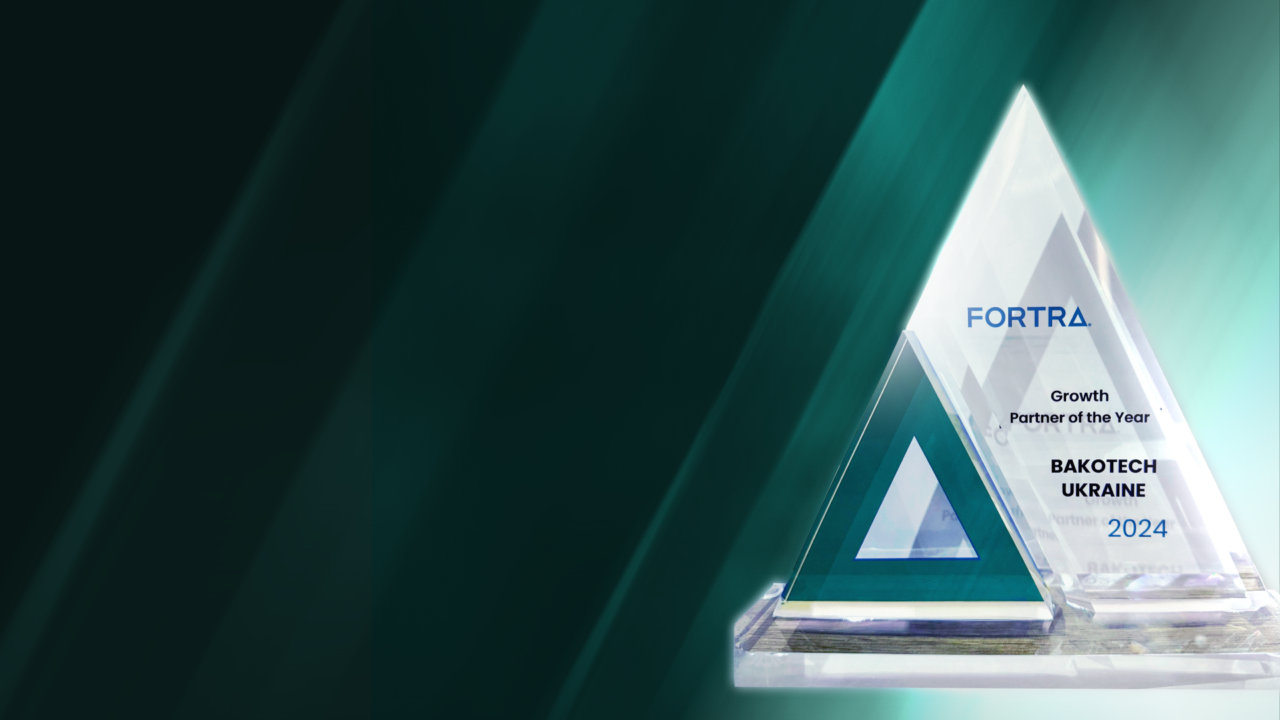As of 2025, a growing number of companies are using the cloud to share data. Employees are scattered around the world, and documents reside in collaborative services. This convenience comes at a cost, bringing risks related to leaks, loss of control, and compliance issues.
In this article, we suggest clarifying how to balance the speed and freedom of cooperation with the business while maintaining the safety of sensitive data.
Letʼs take a look.
Shared work, shared problems?
The business world today revolves around data, and as we can see, the pace is only increasing. The cloud has become the “new office,” while Google Docs, Microsoft Teams, OneDrive, and Word Online have replaced traditional desks and conference rooms.
This permanent adoption of remote and hybrid work has been the most drastic change in recent times. No one is surprised anymore that employees exchange files, edit documents together, and share information with a single click. Undoubtedly, this work format is much more comfortable and appealing. However, as often happens, there is a significant drawback to this ideal picture: the easier it is to share data, the more likely it is to be lost.
According to the Verizon 2025 Data Breach Investigations Report, 60% of breaches are related to the human factor, and 17% are due to espionage. Unfortunately, these arenʼt just scary stories to spice up another strategic meeting. The risks are real — perhaps youʼve already seen their face? They are:
- Unintentional leaks, when a file with financial forecasts accidentally flies “to the wrong Peter”
- Triggered incidents where an internal user purposefully leaked sensitive information
- Chaos in versions and changes, where only Change Data Capture will let you know who and when “enhanced” an important document
- The complexity of controlling exchange channels — mail, messengers, corporate platforms, USB, or even printers
The result is disappointing: CISOs and CIOs pay for comfortable remote work with their peace of mind. Theyʼre constantly forced to figure out how to provide freedom for collaboration without turning the company into a fortress where you have to climb steep bureaucratic stairs just to get any file.
This is where Fortraʼs Secure Collaboration (DRM) is beneficial. The solution answers the most crucial question of our time: how do you let a business work quickly and freely without giving away data to competitors, hackers, or just random recipients?
So, Fortraʼs Secure Collaboration is…
Before defining the solution, letʼs find out what DRM is.
DRM (Digital Rights Management) is a technology that allows you to control how users can interact with copyrighted content. Simply put, DRM transfers control over content from its owner to a special computer program. The main goal is to protect the rights of the author and prevent illegal distribution or modification of the content.
Imagine a smart safe for your data. You can share documents, send them to the cloud or open access in Teams. At the same time, you remain confident that no one outside will gain access to them: even if the file accidentally ends up in the wrong place, encryption will work.
This is how Fortra’s Secure Collaboration works. It is a solution that allows companies to:
- securely share confidential information within and outside the organization
- maintain control over data even after it has left the corporate perimeter (for example, a file in Dropbox or in someone elseʼs mail still remains safeguarded)
- track who is doing what with a document in real time
The solutionʼs main feature is a combination of several powerful approaches:
- Data Classification — marking data by sensitivity level (“for everyone”, “internal”, “confidential”, “top secret”)
- DLP Integration — ability to integrate into existing protection systems
- Digital Rights Management (DRM) — control of who and what can do with the file: open, edit, forward, print, etc
- Change Data Capture — tracking data changes to always know who changed the document and when
- Policy Enforcement — automatic application of corporate security policies, regardless of where the data ended up
Simply put, Secure Collaboration takes care of protecting data where it is in constant motion. From this, we can conclude that a solution with such capabilities is especially relevant for public cloud and SaaS (Office 365, Salesforce, Google Workspace), various collaboration platforms (Teams, SharePoint, Slack, Dropbox), as well as for any shared environments where dozens of people are working with the same documents.
Main components and capabilities
Secure collaboration doesnʼt start with a magic button Protect all: a whole set of tools working together is involved. As we mentioned above, Fortraʼs Secure Collaboration combines several key technologies that keep data under control in any environment, from the cloud to corporate email.
Let’s examine each of these technologies in more detail.
Data Classification: Why label data?
For a moment, let’s go back to office realities, when there was no remote work yet. Remember how all the documents had to be carefully arranged in folders so that nothing was lost? If the documents were just lying in boxes without signatures, it would cause chaos in the work.
This is what an enterprise environment looks like with and without data classification.
Data Classification in Fortra’s Secure Collaboration is “labels” that are automatically or manually assigned to files and emails. They clearly indicate what is in front of you:
- Confidential — internal documents accessible only to a limited group
- Personal Data — information subject to GDPR or other regulations
- Intellectual Property — developments, code, patents, i.e. everything that is highly valuable to business
Why do you need this?
Employees immediately understand what they are dealing with and handle data more carefully. In addition, the security system receives “signals” exactly how to protect the file: allow forwarding, block printing, monitor any activity, etc.
DLP Integration
Secure collaboration allows you to uncover a popular DLP use case: a situation where confidential information cannot be sent externally, but management (e.g. C-level) has permission to download for partners, audits or other business tasks.
The Fortra solution provides a clear answer to the question “How to protect a file that has already left the companyʼs perimeter?” DRM (Digital Rights Management) or data encryption controls a document at every stage of its lifecycle. What’s more, this process can be fully automated through integration with your DLP solution. A file is encrypted or receives DRM tags automatically the moment an authorized user prepares it for external sending.
Why do you need this?
DRM becomes especially valuable when it is integrated with existing security systems, such as a DLP solution. This means that control over sensitive files does not require manual work: the system automatically detects which document contains sensitive information and applies DRM or encryption to it before the file leaves the corporate perimeter.
Integrating DRM with DLP makes data protection dynamic and seamless: files remain under control even when they move outside your company, and you retain full control over who uses them, when and how.
Digital Rights Management, DRM
DRM was originally created to fight piracy in music and film. Now, this technology is saving businesses, from banks and insurance companies that must comply with strict regulations to medical institutions protecting patient personal data.
When a file leaves the companyʼs boundaries — for example, when you share a document with partners — you usually lose control over it. Someone can forward it, print it, save a copy, or even clean up the content.
What exactly DRM does in Fortraʼs Secure Collaboration:
- Restricts actions on the file — you can only allow viewing but prohibit editing, printing, copying or forwarding
- Sets the access period — the document can only be read until, say, the end of the quarter
- Implements watermarks so that employees or partners remember that the document is not anonymous and each copy can be traced
- Revokes access — if a file went “where it shouldn’t”, you can simply take away the rights, even when the file is already on an external device
In practice, the issue of access control may look as follows. You have sent a financial report to partners in Teams. With DRM, they can only view the file online, not copy or forward it. If the contract is not signed, you can revoke access with one click, and no one will open the report again.
Why do you need this?
DRM ensures that your document remains protected even when it is no longer in your hands. That is, DRM is like a “parental access control mode”, but for serious corporate documents.
Change Data Capture (CDC)
Who changed the file?
When exactly did this happen?
What exactly was changed?
Change Data Capture (CDC) answers all these questions; itʼs basically your private detective in the world of data.
Instead of copying everything (as full data replication does), CDC only captures changes. Like, an entry appears in the registry: “Yesterday at 15:42, employee X deleted the column with personal data in the HR_report.xlsx file.”
This saves resources, reduces network load, and allows teams to respond to potential incidents faster.
Thanks to CDC, the business gets transparency, operational alerts (the SOC team or CISO gets an alert if changes look suspicious) and efficiency, as only changes are transferred, not terabytes of “old” data.
Why do you need this?
CDC (Change Data Capture) is a surveillance camera for your data; the eyes that never blink. The technology tracks suspicious moments — for example, when a partner tries to “clean up” a contract in a shared environment. CDC immediately records the change and sends an alert to the CISO dashboard. You see the situation even before the document is sent for signing in its “updated” version.
What are the benefits for business and technical specialists?
Fortraʼs Secure Collaboration works a little differently than the technologies in the long list of security solutions tools.
Actually, Secure Collaboration itself is not exactly a technology. It is more of a strategy to protect digital content from theft, illegal distribution and sale. It acts as “business insurance” that functions all the time, regardless of data placement.
Benefits of Secure Collaboration include:
- Security without borders
Your data always remains under control — in the cloud, SaaS, or on-prem environment. Even if the file “flew” outside the company, it is still protected. - Compliance without headaches
GDPR, HIPAA, and ISO/IEC 27001 often sound scary to companies, but with automatic classification, controlled access and a full activity log, you meet compliance requirements almost “by default”. Therefore, the process of passing the audit becomes more friendly. - Versatility in work
It doesnʼt matter what the team uses: Outlook, Gmail, SharePoint, Teams, Slack, OneDrive or Dropbox. Secure Collaboration integrates into familiar platforms without forcing employees to break their workflows. - Transparency and control
Full visibility: who accessed, what was edited, what actions looked suspicious. This enables the CISO and SOC teams to see the picture in real time and act proactively. - Process automation
Instead of forcing employees to manually set rules or remind them of policies, the system applies ready-made templates and does it itself. A less manual routine means fewer human errors and more focus on real tasks.
The bottom line: the business moves quickly and efficiently, data stays under control, and the security team can feel a little relaxed.
Use cases: when do you turn to Secure Collaboration?
Letʼs imagine several situations that occur in companies every day.
External transfer of documents
You send a financial report or tender documents to a partner. Under normal conditions, after pressing the button Send you lose control forever. With Secure Collaboration, the document gets a mark Confidential, access is opened only to a specific recipient, and it is impossible to forward or print it. If the partner should no longer see the file, access is revoked in one click.
Theft of data by employees
HR works with files that contain personal data of employees. In such cases, the risk of leakage is particularly high. Classification automatically marks documents as Personal Data, and DRM blocks copying, printing and sending outside the company. If someone tries to circumvent the rules, the SOC is immediately notified.
Joint work on the document
Various teams simultaneously edit the contract in the cloud environment. The Change Data Capture system records who made the changes and when. It allows you to undo them if it turns out that a part was incorrect or deliberately modified. Transparency and auditing are built in from the start.
Switch to SharePoint or Teams
Companies are massively migrating their work to Microsoft 365. This is convenient but opens up a new risk area: hundreds of documents with overly broad access. Secure Collaboration integrates with these platforms, adding a layer of classification, rights management, and monitoring. As a result, documents remain protected even in open environments.
Shall we summarize?
Data control, reliable security, full transparency of changes and access, and automatic compliance are no longer abstract “good practices”, but certain tools that can and should work every day. Fortra’s Secure Collaboration allows you to build a secure, transparent, and effective collaborative environment where every document remains under control and risks are minimized.
Itʼs time to see it in practice: leave a request for a demo version! Learn how Fortraʼs Secure Collaboration can protect your data and simplify collaboration today.
Take the first step to a new level of security
 Austria
Austria  Azerbaijan
Azerbaijan  Bosnia and Herzegovina
Bosnia and Herzegovina  Bulgaria
Bulgaria  Croatia
Croatia  Czech Republic
Czech Republic  Denmark
Denmark  Estonia
Estonia  Finland
Finland  Georgia
Georgia  Germany
Germany  Hungary
Hungary  Kazakhstan
Kazakhstan  Kyrgyzstan
Kyrgyzstan  Latvia
Latvia  Lithuania
Lithuania  Moldova
Moldova  Montenegro
Montenegro  North Macedonia
North Macedonia  Norway
Norway  Poland
Poland  Romania
Romania  Serbia
Serbia  Slovakia
Slovakia  Slovenia
Slovenia  Sweden
Sweden  Switzerland
Switzerland  Tajikistan
Tajikistan  Turkmenistan
Turkmenistan  Ukraine
Ukraine  Uzbekistan
Uzbekistan 



